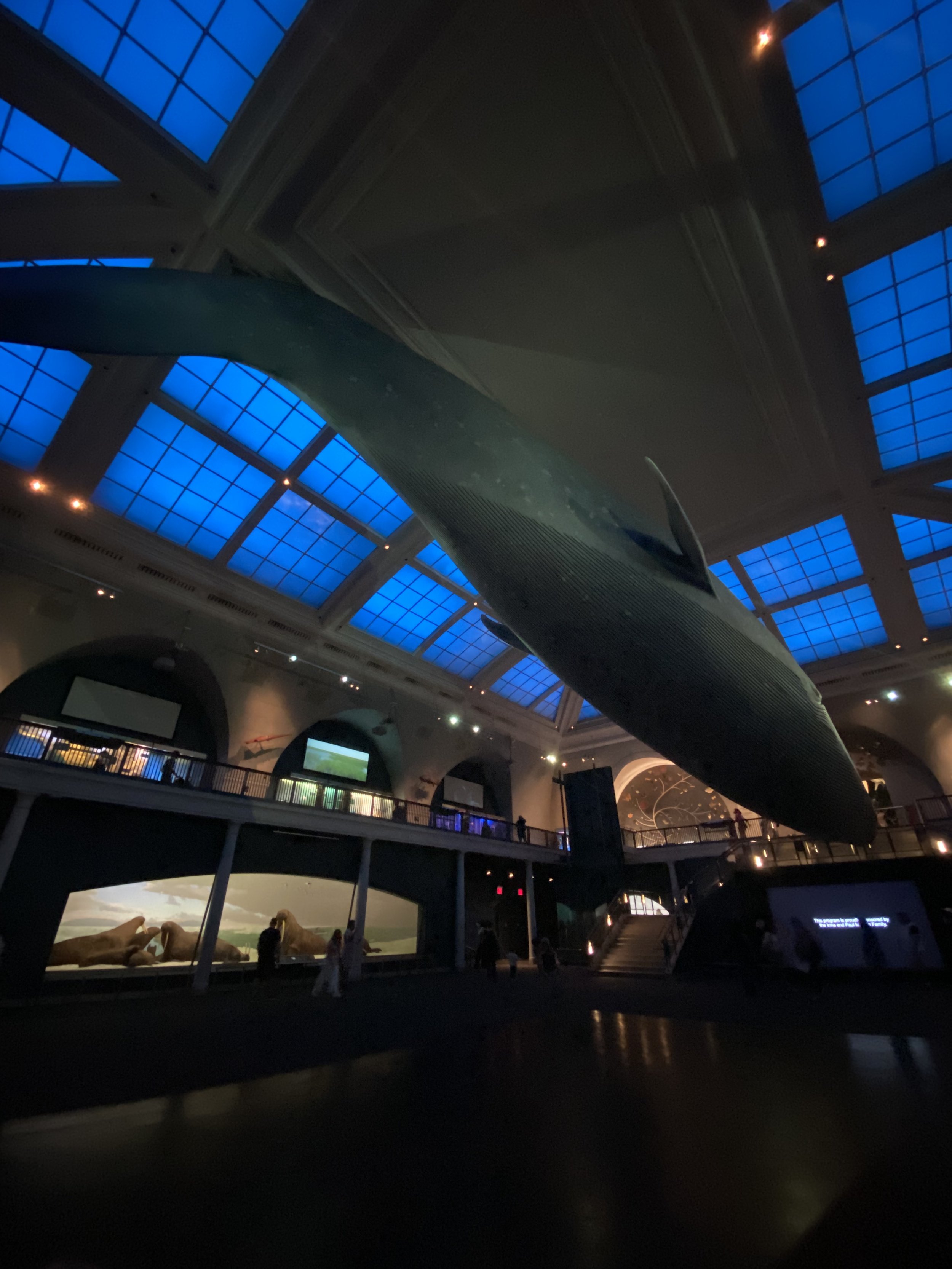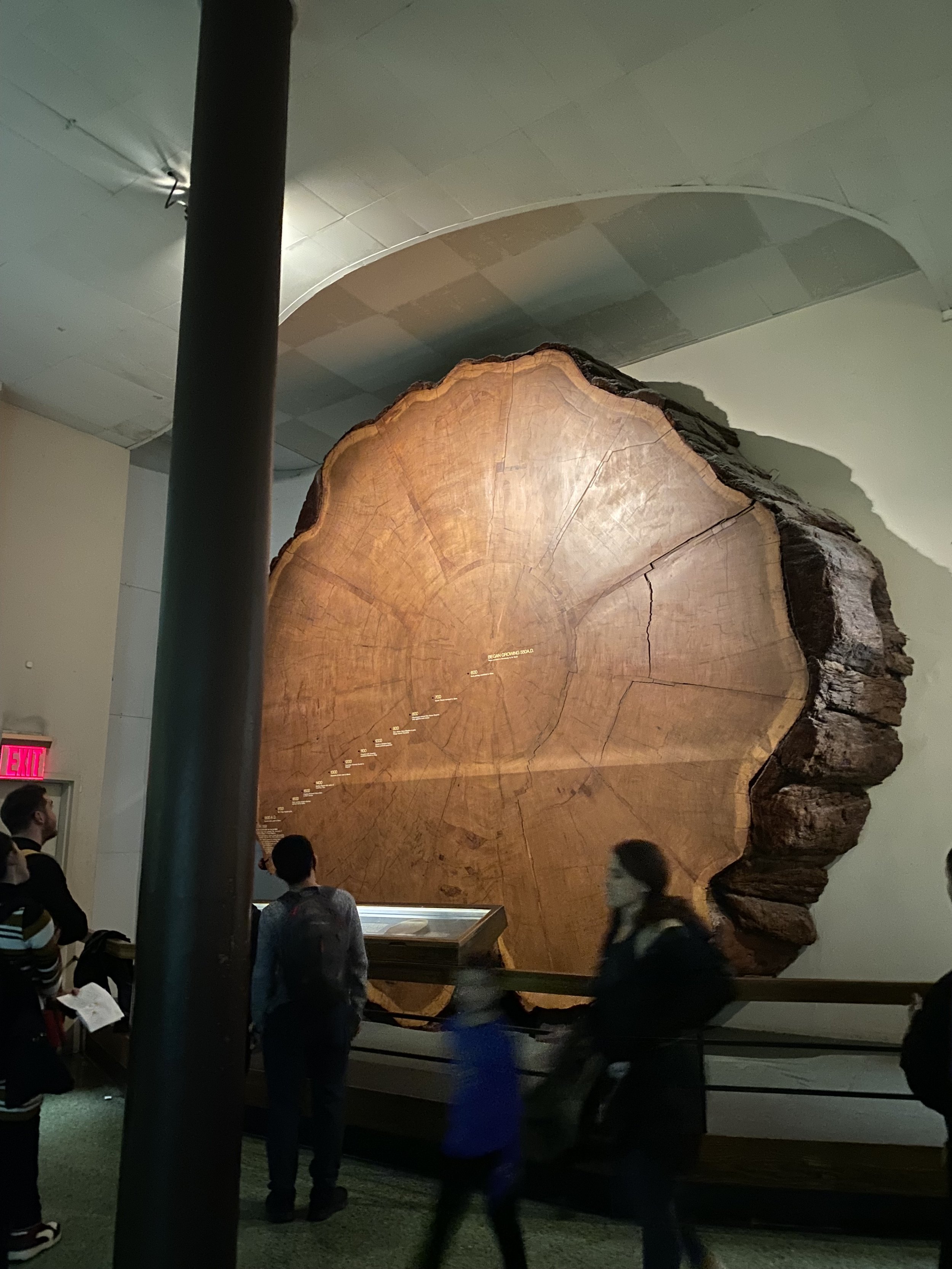PORTUGUÊS
O Museu de Historia Natural em Nova York é o mais visitado de sua categoria nos EUA e uns dos museus mais visitados do mundo. Muito conhecido pelo público em geral através do filme Uma Noite no Museu, esse museu se destaca pela diversidade de artefatos em exibição.
O que você não pode deixar de ver nesse museu:
1 - Lucy: Lucy tem mais de três milhões de anos e foi descoberta em 1974 na Etiópia. É um dos esqueletos mais completos dos primeiros hominídeos já encontrados no planeta. Ela é muito importante não apenas por sua idade e completude, mas pelo fato de seus joelhos nos mostrarem que ela andava ereta.
2 - Willamette Meteorite: A colossal rocha espacial de 15,5 toneladas Willamette Meteorito viajou a quase 40.000 MPH até a Terra, aterrizando entre o Canada e Montana, EUA. É o maior meteorito encontrado nos Estados Unidos e o sexto maior do mundo. Hoje se encontra no museu no seu subsolo, em exibição na area das rochas e meteoritos.
3 - Dioramas: Fundado em 1869 o museu é considerado, desde do seu início, uma instituição referência cientifica e cultural. Os dioramas do American Natural History Museum, quando foram construídos pela primeira vez, eram uma oportunidade para as pessoas verem um mundo para o qual a maioria não tinha acesso, ou ideia de como era. Em um tempo onde nao existia televisao ou internet era atravez de museus que o publico em geral se interava do que existia no planeta. Os dioramas do museu datam do inicio dos anos 1900. Reconstroem em uma espécie de vitrine prensada a vaco o habit de varias especies de todo o planeta recriando ali detalhadamente o ambiente do animal com terra, árvores, arbustos, pedras e pintura do visual local.
4 - T-Rex: O T-Rex em exibição no museu esta ali por mais de um século. Foi descoberto num local chamado de Big Dry Creek, Montana, pelo paleontólogo Barnum Brown. Esse dinossauro foi descoberto no ano de 1908 e, ainda hoje, encanta os visitantes pela sua grandesa.
5 - The Blue Whale: O modelo original da baleia azul, o maior animal que já existiu, ainda maior do que os enormes dinossauros, foi construído na década de 60 baseada em fotografias tiradas de uma baleia fêmea encontrada em 1925 morta no extremo sul da América do Sul. O formato mais tarde foi descoberto não estar fiel a imagem de uma dessas baleias e em 2001 o museu decidiu repaginar o modelo. Ela está suspensa por um cabo de aço presa no teto e é feita de 21.000 libras de espuma e fibra de vidro. Com a renovação do modelo da baleia azul o museu corrigiu os olhos (estavam extremamente esbugalhados) e afinaram a cauda. Curiosidade - mede cerca de 28 metros, pode ter o tamanho de um Boeing 737.
6 - Sequóia Gigante: Se você um dia tiver a oportunidade de visitar a floresta das árvores gigantes, floresta das Sequoias, garanto que será super impactante. Uma das coisas mais impressionantes e belas que ja vi na natureza. Consideradas umas das árvores mais antigas do planeta, a floresta tem arvores de mais de 3100 anos. Na seção do museu a fatia da árvore em exibição foi derrubada por madeireiros na Califórnia, em 1891 e possuía 90 metros de altura. A casca grossa da sequóia é resistente ao fogo. As árvores contêm um conservante de madeira natural e são altamente resistentes a doenças (Hoje é ilegal cortar sequóias gigantes).
7 - African Elephants: Localizado no Akeley Hall de mamíferos africanos, visitantes podem ver umaa família de elefantes africanos, um desses elefantes foi abatido pelo Theodore Roosevelt logo após sua presidência, em 1909. O elefante africano é o maior mamífero terrestre vivo e, tanto os machos quanto as fêmeas têm presas de marfim. De quando o museu foi criado ate meados da década 20 era comum expedicoes do museu pelo mundo, era a forma que os cientistas conseguiam estudar a natureza; alem dos livros.
8 - Hayden Planetarium: Com um valor extra no ingresso o visitante pode assistir a uma apresentação de 25 min sobre nossa Terra e nossos vizinhos cósmicos. Com uma experiência imersiva que não apenas educa, mas inspira, a ideia é despertar nas mentes mais jovens a vontade de explorar o espaço, trazendo, quem sabe, futuros cientistas que foram inspirados na sua visita ao Planetário do Museu de História Natural em Nova York.
ENGLISH
The Museum of Natural History in New York is the most visited of its kind in the US and one of the most visited museums in the world. Well known to the general public through the film Uma Noite no Museu, this museum stands out for the diversity of artifacts on display.
What you can't miss in this museum:
1 - Lucy: Lucy is more than three million years old and was discovered in 1974 in Ethiopia. It is one of the most complete skeletons of early hominids ever found on the planet. She is very important not only because of her age and completeness, but because her knees show us that she walked upright.
2 - Willamette Meteorite: The colossal 15.5 ton space rock Willamette Meteorite traveled at nearly 40,000 MPH to Earth, landing between Canada and Montana, USA. It is the largest meteorite found in the United States and the sixth largest in the world. Today it is in the museum in its basement, on display in the area of rocks and meteorites.
3 - Dioramas: Founded in 1869, the museum has been considered, since its inception, a scientific and cultural reference institution. The dioramas at the American Natural History Museum, when they were first built, were an opportunity for people to see a world that most had no access to, or idea what it was like. In a time when there was no television or internet, it was through museums that the general public became interested in what existed on the planet. The museum's dioramas date back to the early 1900s. They reconstruct the habitat of various species from all over the planet in a kind of vacuum-pressed showcase, recreating the animal's environment in detail with earth, trees, bushes, stones and painting the local look.
4 - T-Rex: The T-Rex on display at the museum has been there for over a century. It was discovered in a place called Big Dry Creek, Montana, by paleontologist Barnum Brown. This dinosaur was discovered in 1908 and, even today, it enchants visitors with its large size.
5 - The Blue Whale: The original model of the blue whale, the largest animal that ever existed, even bigger than the huge dinosaurs, was built in the 60s based on photographs taken of a female whale found dead in 1925 in the extreme south of South America. The shape was later discovered not to be true to the image of one of these whales and in 2001 the museum decided to redesign the model. It is suspended from a steel cable from the ceiling and is made from 21,000 pounds of foam and fiberglass. With the renovation of the blue whale model, the museum corrected the eyes (they were extremely bulging) and thinned the tail. Fun fact - it measures about 28 meters, it can be the size of a Boeing 737.
6 - Giant Sequoia: If you ever have the opportunity to visit the forest of giant trees, Sequoia forest, I guarantee it will be super impactful. One of the most impressive and beautiful things I've ever seen in nature. Considered one of the oldest trees on the planet, the forest has trees that are over 3100 years old. In the museum section the slice of the tree on display was felled by loggers in California in 1891 and was 300 feet tall. The thick bark of the sequoia tree is fire resistant. The trees contain a natural wood preservative and are highly resistant to disease (Today it is illegal to cut down giant sequoias).
7 - African Elephants: Located in the Akeley Hall of African Mammals, visitors can see a family of African elephants, one of these elephants was shot by Theodore Roosevelt shortly after his presidency in 1909. The African elephant is the largest living land mammal and, both both males and females have ivory tusks. From when the museum was created until the mid-1920s, it was common for museum expeditions around the world, it was the way that scientists were able to study nature; beyond the books.
8 - Hayden Planetarium: With an extra ticket price, visitors can watch a 25-minute presentation about our Earth and our cosmic neighbors. With an immersive experience that not only educates, but inspires, the idea is to awaken in younger minds the desire to explore space, bringing, who knows, future scientists who were inspired by their visit to the Planetarium of the Museum of Natural History in New York .
TOURS EM NOVA YORK - PORTUGUESE | ENGLISH | ESPANHOL




